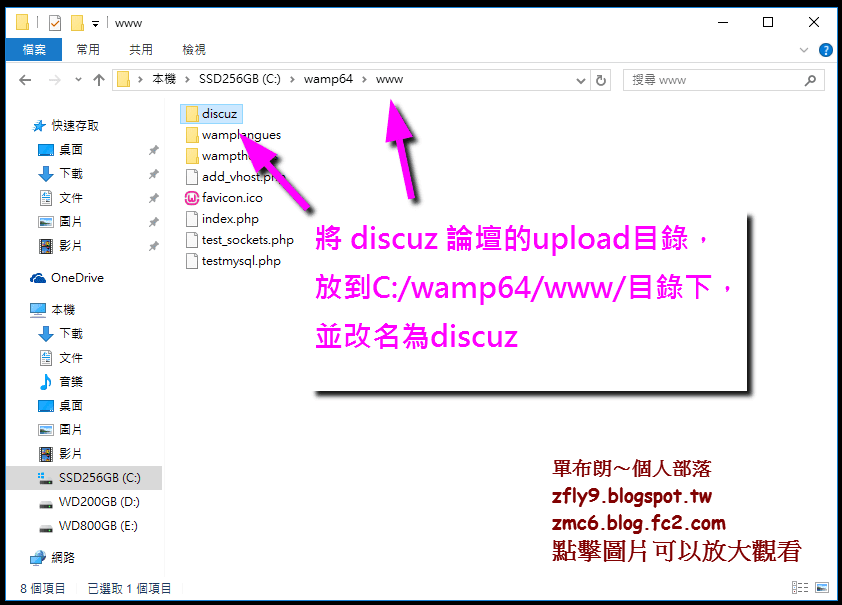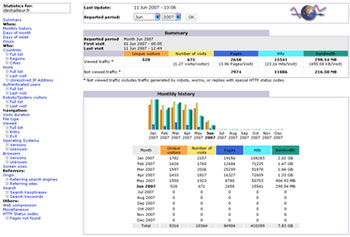

- #Awstats virtual host wamp how to
- #Awstats virtual host wamp install
- #Awstats virtual host wamp update
- #Awstats virtual host wamp software
- #Awstats virtual host wamp password
You can now host AWStats in the production environment to monitor your website – try it on your dedicated server hosting account from install it on the default directory ( C:\wamp) to avoid weird behavior in the future.
#Awstats virtual host wamp how to
In the above post, you learned how to install and configure AWStats to analyze your website log. You can now view the Apache log statistics of your website () using the URL You should see the AWStats dashboard on the following page:

Next, restart the Apache service to apply the configuration changes: systemctl restart httpd Step 7 – Access AWStats Next, set proper ownership to the AWStats root directory with the following command: chown -R apache: /usr/share/awstats/wwwroot/ You should get the following output: proxy_fcgi_module (shared) Next, make sure CGI modules are enabled with the following command: httpd -M | grep cgi You can find the IP address of your desktop system using. Your-system-ip is the IP address of your desktop system from where you want to access AWStats. Save and close the file when you are finished. Replace it with the following line: Require ip your-system-ip Step 6 – Configure Apache to Access AWStatsīy default, the Apache webserver is configured to access AWStats only from the localhost, so you will need to edit nf file to grant access to your IP address. Phase 2 : Now process new records (Flush history on disk after 20000 hosts). Searching new records from beginning of log file. Phase 1 : First bypass old records, searching new record. You can generate it with the following command: /usr/share/awstats/You should get the following output: Create/Update database for config "/etc/awstats/.conf" by AWStats version 7.8 (build 20200416)įrom data in log file "/var/log/httpd/test_access.log".

Next, you will need to generate your initial statistics from the current Apache logs. Step 5 – Generate Web Statistics from Apache Logs Next, edit the configuration file: nano /etc/awstats/.confĬhange the following lines: LogFile="/var/log/httpd/test_access.log" To do so, create a copy of the main configuration file to the file that matches your domain name: cp /etc/awstats/ /etc/awstats/.conf Here, you will need to create a separate configuration file for your domain. Step 4 – Configure AWStatsīy default, AWStats all configuration files are located inside /etc/awstats/ directory. Once the installation is completed, you can proceed to the next step. Next, install the AWStats with the following command: yum install awstats -y

You can add it with the following command: yum install epel-release -y Save and close the file, then restart the Apache service to apply the changes: systemctl restart httpd Step 3 – Install AWStatsīy default, AWStats is not available in the CentOS 7 default repo, so you will need to add EPEL repo to your system. Next, create a new virtual host configuration file with the following command: nano /etc/httpd/conf.d/nfĬustomLog /var/log/httpd/test_access.log combined Once the installation is completed, start the Apache service and enable it to start at system reboot with the following command: systemctl start httpd Next, edit your /etc/hosts file and setup a fully qualified domain name as shown below: nano /etc/hostsĪdd the following line: your-server-ip įor this article, you will need to install the Apache webserver and create a virtual host configuration file for domain .įirst, install the Apache package with the following command: yum install httpd -y
#Awstats virtual host wamp update
Once you are logged in to your CentOS 7 server, run the following command to update your base system with the latest available packages. Connect to your Cloud Server via SSH and log in using the credentials highlighted at the top of the page. Create a new server, choosing CentOS 7 as the operating system with at least 2GB RAM. Step 1 – Create Atlantic.Net Cloud Serverįirst, log in to your Atlantic.Net Cloud Server.
#Awstats virtual host wamp password
#Awstats virtual host wamp software
AWStats, also known as “Advanced Web Statistics,” is an open-source web analytics software written in Perl.


 0 kommentar(er)
0 kommentar(er)
